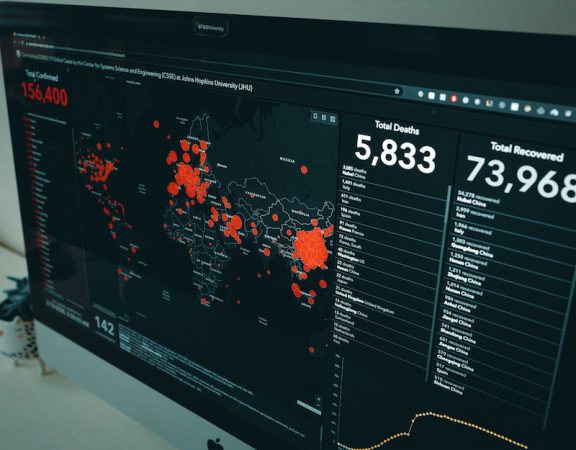

Tools for data visualization

Consuming large sets of data isn’t always straightforward. Sometimes, data sets are so large that it’s downright impossible to discern anything useful from them. That’s where data visualizations come in.
Creating data visualizations is rarely straightforward. It’s not as if designers can simply take a data set with thousands of entries and create a visualization from scratch. Sure, it’s possible, but who wants to spend dozens or hundreds of hours plotting dots on a scatter chart? That’s where data visualization tools come in.
First of all, what’s data visualization?
Scientific visualization, information visualization, and visual analytics are often seen as the three main branches of visualization. The new discipline “Data Visualization”, which is a combination of these three branches, is a new starting point in the field of visual research.
Generalized data visualization involves various disciplines such as information technology, natural science, statistical analysis, graphics, interaction, and geographic information.
There is a wide range of art depictions that data visualization tools can create. Some depictions are simple, some are complicated. Some are beautiful, some are crude. And there are some that are truly individual creations. But most spring from templates in the traditional forms associated with statistics.
The simplest examples of data visualization are the pie and bar charts you’ve been able to access via Microsoft Excel for many years now. But as business intelligence has matured as a platform, so, too, have the options available to you for seeing your data and presenting it to others.
The tools listed below are either dedicated visualization solutions or complete analytics packages that are particularly noted for their visualization capabilities. Here’s our roundup of the best tools that are available today.
MicroStrategy Analytics Desktop
MicroStrategy Analytics Desktop is a fast and user-friendly software for visual data analytics. Quick to download and install, this visualization software allows you to get to work quickly. Included sample data and pre-built interactive dashboards further serve to lower the learning curve.
MicroStrategy allows you to connect any database you like, import Excel spreadsheets/CSV files and even import data from an online source. What’s more, you can blend multiple data sources and types to gain the exact insights you need.
The basic version is free and allows for simplistic, but insightful, visualizations to be created. If your project requires more advanced features, like Salesforce Reporting, Enterprise Information Integration or Mobile access, upgrading to “Analytics Enterprise” allows you to access these features.
PowerBI
Microsoft’s industry-standard business analytics platform offers some very useful and intuitive data visualization functionality. PowerBI makes it simple for someone with no prior experience to start creating interactive dashboards and charts from their enterprise data. As with all of Microsoft’s cloud business services, it is designed to allow teams to work collaboratively on data projects. It also allows queries to be made in natural, conversational language with the results quickly rendered in clear and eye-catching graphics.
PowerBI comes with a good range of templates and visualization options, with new ones available either for free or for purchase on Microsoft’s Azure marketplace. It is also available in a free version, and affordable in its enterprise version, starting from $10 per license.
Tableau
Tableau offers a suite of tools that include an online, desktop and server version. All of these versions provide an easy-to-use drag and drop interface that can help you quickly turn your data into business insights. The online and server versions allow your entire team to build and work with the visualization tool.
Like many other data analytics and visualization tools, Tableau can connect to local or remote data of many different formats. Additionally, the Tableau engine can connect to live data for up-to-date visualizations (at the sacrifice of some speed) or warehoused data for many smoother-moving visualizations.
Infogram
This is a dedicated visualization tool geared towards creating charts, presentations, and dashboards for enterprise use. A simple drag-and-drop interface lets you quickly build documents or slides packed with graphical information. Its collaborative-working elements are particularly strong, enabling teams to experiment with different data representations in different ways to see what works best.
If you need a dashboarding tool specifically designed for infographics, charts, slides, and maps, to plug into an existing analytics platform, Infogram is certainly worth a look.
In conclusion, data visualization is a huge field with many disciplines. It is precisely because of this interdisciplinary nature that the visualization field is full of vitality and opportunities.



